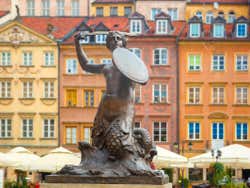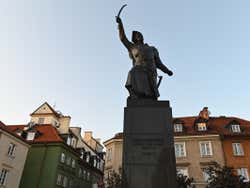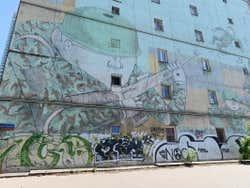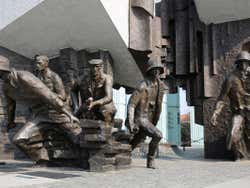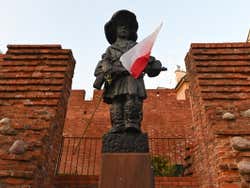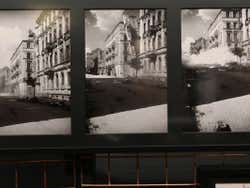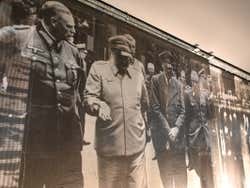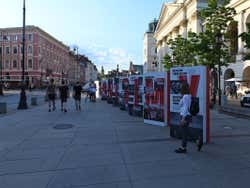
History of Warsaw
Warsaw defiantly resisted the Nazis, resulting in the complete destruction of the city by German forces. Today, Warsaw stands as one of the largest capitals in the European Union. Explore the compelling history of Warsaw.
The Origins of Warsaw
In the mid-10th century, the humble Polish village of Bródno began expanding and competing economically with its neighboring cities. Three centuries later, the populace migrated to a nearby town, Warszawa (Warsaw), eventually becoming the capital of the Duchy of Mazovia.
As Warsaw's population burgeoned, significant buildings like the old Royal Castle, city walls, Sigismund's Column, and the Market Square were erected. Notably, the iconic statue of the mermaid found its place, becoming intricately tied to Warsaw's history.
By the 16th century, Warsaw became part of the kingdom and rose to prominence as the capital of Poland in 1596 when King Sigismund III relocated his court to the Vistula riverside city.
Warsaw's Trials and Tribulations
The 17th century proved devastating for Warsaw, marked by fires, epidemics, and invasions that left an indelible mark on the city's history. Following the War of Succession (1733-1738), Poland ousted the Swedish-imposed monarch, leading to the election of a Polish king, Augustus III. His successor, Stanislaus II, marked the end of Poland as an independent nation.
After several invasions, in 1795, the powers of Austria, Prussia, and Russia divided Poland, which disappeared from the map for 123 years. The city of Warsaw was annexed to Prussia.
It wasn't until the end of World War I that Poland regained independence, albeit with significantly reduced borders.
Warsaw During World War II
In the initial days of World War II, German troops swiftly invaded Warsaw. The Nazis perpetrated widespread destruction, burning historical buildings, demolishing bookstores and universities, resulting in a toll of 10,000 lives during the three-month siege.
The Nazi triumph ushered in five years of relentless German occupation marked by constant purges, forced labor, and the pervasive presence of the Gestapo. The inception of the Warsaw Ghetto in 1940, Europe's largest Jewish ghetto, triggered these atrocities, with over 445,000 Jews crammed into a 10-square-kilometer enclave enclosed by a formidable wall.
Life within the Warsaw ghetto was marked by profound inhumanity. Hunger, disease, and overcrowding coexisted with recurrent deportations to concentration and extermination camps. Over the three-year duration of the Warsaw ghetto's existence, a staggering 88% of its population succumbed. The courageous Warsaw Ghetto Uprising of 1941, spanning 15 days, concluded with additional casualties and deportations.
On August 1, 1944, Warsaw defiantly rose against Nazi oppression in the Warsaw Uprising, setting a profound example for all of Europe. To this day, every August 1 at 5 pm, the echoing sirens, reminiscent of the bombs in 1944, reverberate through the city as a solemn tribute.
The profound impact of these events is meticulously captured in the Warsaw City Museum, the Uprising Museum, and the POLIN Museum, featuring photographs, artifacts, and firsthand accounts.
Under Communist Rule
As the Warsaw Uprising neared its conclusion and Polish forces weakened, the Red Army, stationed just a few kilometers from Warsaw, mysteriously halted its eastward advance. This led to speculation that Stalin deliberately allowed the Polish uprising to fail, facilitating a subsequent invasion of Poland.
Indeed, on February 1, 1945, the People's Republic of Poland emerged under Soviet rule, marking the onset of forty years of communist governance. During this period, Warsaw, once razed to the ground by the Nazis, witnessed reconstruction and improved conditions for Poles, though they continued to live without freedom until 1989.
The iconic Palace of Culture and Science in Warsaw, a relic from the communist era, stands as a testament to this period, constructed under Stalin's directive.
Warsaw in the 21st Century
Warsaw embarked on extensive citywide reconstruction, a commendable effort recognized in 1980 when UNESCO designated Warsaw a World Heritage Site.
In 2004, Poland joined the European Union, yet Warsaw continues to use the Polish zloty as its currency. The capital hasn't ceased its growth and remains a prominent tourist destination, presently ranking as the ninth most populous city in the European Union.
